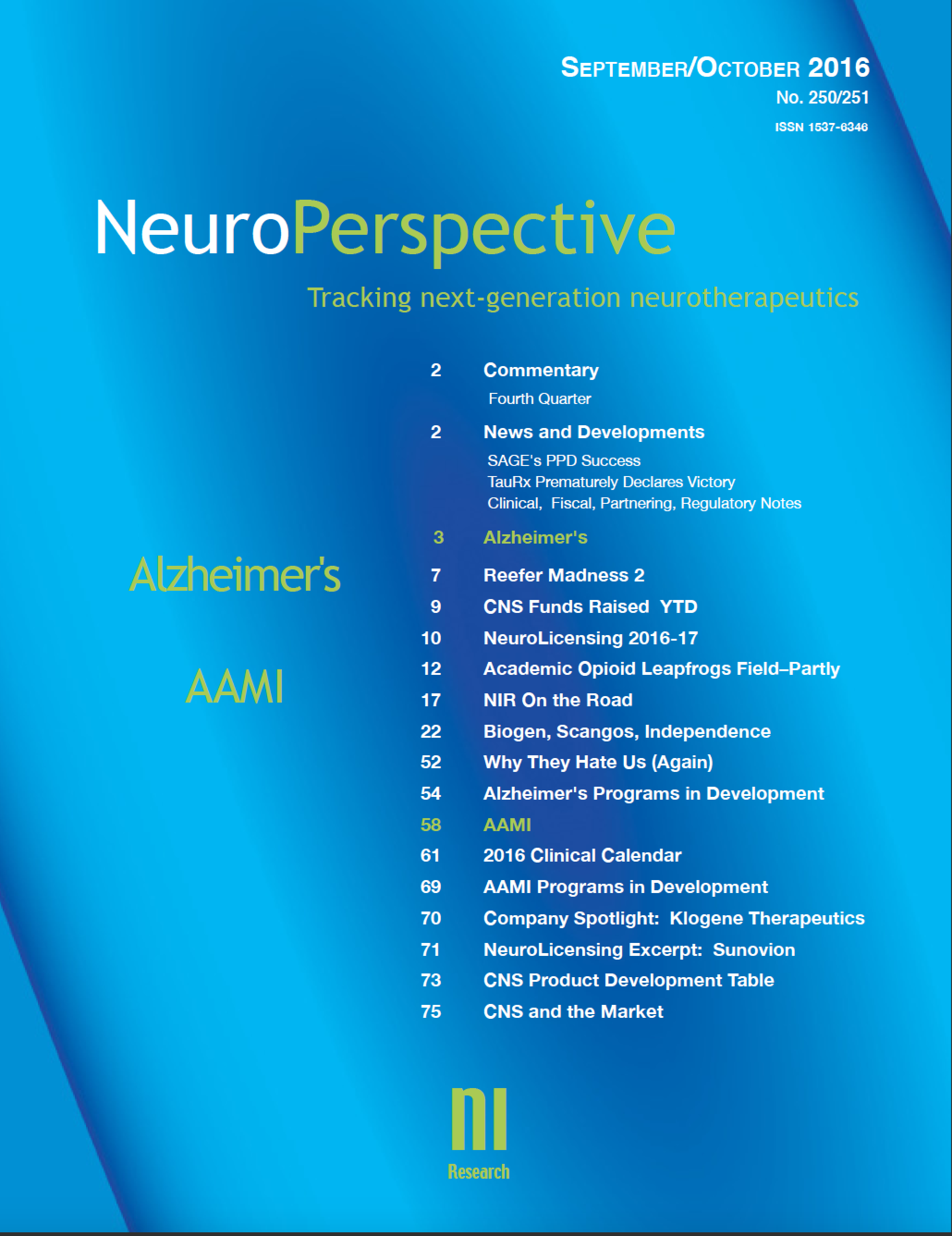The May/June issue of NeuroPerspective for 2017 has been released, offering detailed reviews of two therapeutic areas, as well as coverage and commentary regarding significant developments in the CNS therapeutics space.
The first therapeutic sector review covers Schizophrenia, the most devastating of all the psychiatric disorders, one which reflects the awkward melding of multiple schizophreniform disorders with very divergent symptom patterns. Affecting about 1% of the population, schizophrenia’s genetic vulnerabilities are complex and contribute to schizophrenia’s etiological confluence of genetic flaws, prenatal/perinatal environmental factors, and later anomalies in the formation and ‘editing’ of synaptic networks. While still speculative, it does appear that at its root, schizophrenia arises from neurodevelopmental failure exacerbated by the degenerative impact of aberrant adolescent synaptic ‘pruning.’ Network deficits account for the neural dyscontrol that sets the stage for hallucinations/delusions, and for the impoverishment of cognitive capabilities and motivation. Current therapeutics are solely aimed at the so-called positive symptoms of schizophrenia, to this point no one has had success developing treatments for the cognitive and negative symptoms that take such a functional toll, even when the more florid symptoms of schizophrenia are relatively controlled. Some of the companies whose programs are discussed in the review include: Annexon Biosciences, Allergan, SAGE Therapeutics, Takeda, Merck/Bionomica, Acadia, Promentis, Newron, Intra-Cellular Therapies, Karuna Pharmaceuticals, and Sunovion. With Tardive Dyskinesia one of the horrific legacies of an earlier era of antipsychotic treatment, the issue also assesses the two new entrants for the treatment of TD, from Neurocrine Biosciences and Teva.
The second therapeutic sector review covers Epilepsy, which has seen the development of a novel mechanistic approach (orexin antagonism), despite the plethora of relatively effective but imperfect GABAergic sedative-hypnotics already available. Those drugs have a number of shortcomings, but create a genericized environment that constitutes a significant commercial challenge. This has been tackled by Merck‘s suvorexant/Belsomra, handicapped by FDA-imposed dosing recommendations that recommended a subclinical dose, ensuring that many prescribers and patients would be initially dissatisfied. Merck has not broken out its sales figures, which is a sure sign that they lag expectations. The other companies whose programs are discussed in this review include: Eisai/Purdue Pharma, Minerva Neurosciences/JNJ, Ferrer/Ergomed, Intec Pharma, and the Actelion spin-out company.
The May/June issue also includes discussion of recent clinical findings from AveXis, Neuren, Catalyst, and Allergan, as well as commentary on the dismantling of BMS’ CNS portfolio and the emergence of BioHaven; and the activist investor putsch at Depomed. Company Spotlight Reviews are included for BioHaven Pharmaceuticals and Karuna Pharmaceuticals.
NI Research is the leading publisher of independent research on the neurotherapeutics industry, and has developed an unmatched information base regarding both publicly and privately held CNS companies. NeuroPerspective is the authoritative, independent, monthly review of the neurotherapeutics area, providing critical analyses of therapeutics-in-development.
A one-year (1-5 user) subscription to NeuroPerspective is $2600. Special startup, nonprofit, and academic pricing is available. The May/June issue of NeuroPerspective is available as a single-issue purchase for $500.

